Ed Protzel's Blog, page 7
January 11, 2016
Honor Among Outcasts: Early Research Takes me to the Missouri/Kansas Border
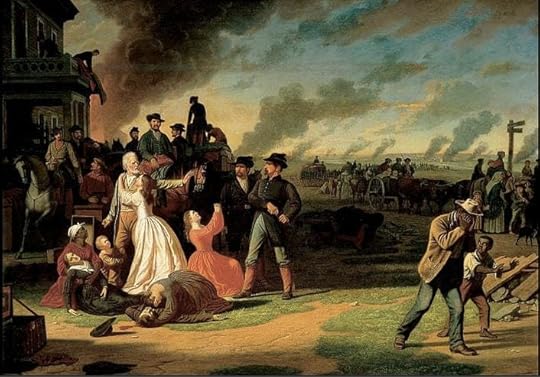
George Caleb Bingham painting of General Order No. 11. In this famous work General Thomas Ewing is seated on a horse watching the Red Legs.
I’m progressing on my newest novel, Honor Among Outcasts (Book 2 of the DarkHorse Trilogy). The story takes place in Civil War Missouri, the nastiest, lowdown, dirtiest part of the bloody conflict—oh, what my poor, harried characters may encounter!
Besides my main characters, I also am considering adding a couple of quirky new ones. Readers really loved the oddballs in Book 1 (The Lies That Bind), like idealistic little Ellen. We’ll see what fits into the new story and its themes.
So far, I’m fascinated by the 1863 chain of horrors on the Missouri/Kansas border during the war. I think I’ll begin with Union General Ewing’s Orders 9 and 10, which were tough responses to ruthless rebel guerilla activity, including crimes against civilians, what today we’d call crimes against humanity. As a response to these Orders, Confederate bushwackers massacred hundreds of abolitionist civilians in a raid on Lawrence, Kansas. Killed men, women, and children. Quantrill and other guerilla leaders led 400 rebs.
These brutal murders led, in turn, to Ewing’s Order 11, which cleared whole western Missouri counties of everyone, especially “pro-rebel” sympathizers, but pro-Union citizens, as well: everyone, men, women, and children. In defiance of their orders, troops robbed and burned their homes and farms in retaliation. Picture it: the roads clogged with refugees, old men, women and children, some with few clothes on their backs, many with no mules or oxen to pull wagons, carrying what they could save! Rough times.
Oh, my poor, sensitive characters, faced with unspeakable crimes, getting caught up in history’s tragedies. How did the DarkHorse partners—Durk, Big Josh, Antoinette, Isaac, et al—Devereau French, and their respective allies jump out of the Mississippi flames into this inferno?
But of course, nothing is simple in my novels. Twists and turns, surprises and revelations will be coming at you faster than a flash flood—oh, what I plan to startle and delight you with — again!
Online With Ed
If you haven’t done so, check out my online interviews: G.W. Pomichter’s “Hangin With” show, and David Clarke’s “Different Strokes for Different Folks.” And coming up: my interview on LA Talk Radio’s “The Writer’s Block” on March 31 (8 pm PST/6 pm CT), with Jim Christina and Bobbi Bell.
I’ll keep you up-to-date on all this!
Oh, and after you’ve read The Lies That Bind, let me know what you think. I love getting feedback, opinions and recommendations from fans.
For now, on with the Honor Among Outcasts research!
January 4, 2016
On With the New Year: Forthcoming Novels in the Queue
Late-2015 proved a busy, busy time for me. My first novel, The Lies That Bind (The DarkHorse Trilogy, Book 1), was published in early December by TouchPoint Press, and as you can imagine, it was quite a thrill to hold the book in my hands after all that went into it!
Even before the book was in print, I’d had three interviews lined up, with many other interviews, signings and appearances in store for 2016.
“Different Strokes for Different Folks”
My first interview took place Dec. 3, just before the book’s release, on David Clarke’s “Different Strokes for Different Folks” (we talked a full 58 min.). David calls himself a “spiritual adventurer,” and we talked about the “spiritual” — or what I’d describe as the “aspirational” — aspects of The Lies That Bind. These can be found deeply buried under the layers of desperation the characters endure and the subterfuge they must promulgate to survive in that restrictive society—beneath their deeply hidden secrets. Find it here.
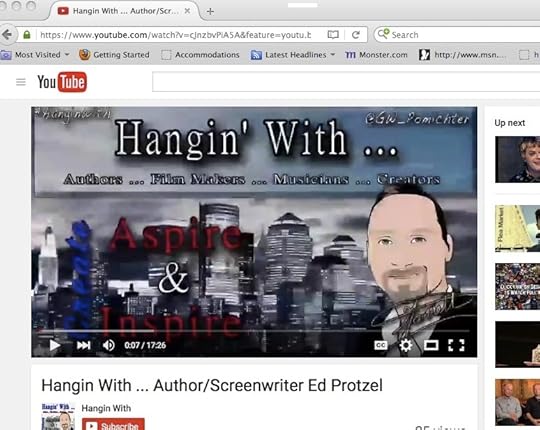
“Hangin With...”
On the heels of the Clarke interview, I did my first Skype interview with G.W. Pomichter for his YouTube show “Hangin With...” (30 min.). Garrett, a former journalist, is a great interviewer, with lots of personality and knowledge in the arts, literature and film, and the show has terrific production values. I see a limitless future in TV for Garrett. Catch it at on YouTube.
“The Writer’s Block”
On March 31, I’ll be speaking with Jim Christina and Bobbi Bell on their LA Talk Radio show, “The Writer’s Block.” Being an LA show, I’ll probably talk more extensively on my screenwriting and how The Lies That Bind had its roots in that medium.
"An audacious scheme"
I’ve even ventured into production myself, posting a brief trailer on YouTube: An audacious scheme: The Lies That Bind. In 1:15 min. it captures the intrigue and essence of The Lies That Bind. View it here.
Much more in the works! All will be posted on the Events page of my website so check back frequently. I’ll also be posting events on my Facebook page - so “Like” me if you haven’t already to get the latest. Will tweet it out too.
New novels in the queue—whoa!
Working now on two books that definitely bear the Ed Protzel imprint—conflicted characters burdened by lots of secrets, plots with a plethora of surprises, revelations, twists and turns.
First on my agenda is researching and sketching out Honor Among Outcasts, Book 2 in The DarkHorse Trilogy, which takes place in Civil War Missouri, the nastiest, cruelest perversion of the conflict. Oh, my poor, sensitive characters, faced with unspeakable crimes! Massacres of civilians by Confederate bushwackers, even Order 11 by Union General Ewing, which cleared whole counties of “pro-rebel” sympathizers: men, women, and children. How did the DarkHorse partners—Durk, Big Josh, Antoinette, Isaac, et al—Devereau French, and their respective allies jump out of the frying pan into this inferno? Book 2 due in 2016; Book 3, Something in Madness, to follow in 2017.
And then there is The Antiquities Dealer, nearing completion. I describe the novel as a genre-stretching, ostensible futuristic suspense/mystery/thriller (and don’t forget, romance). But aren’t all my works genre-stretchers?
In this novel, an upscale Jewish antiquities gallery owner is drawn by his former lover into a scheme by a purportedly ancient society of Israelis to clone the great minds of history—beginning with Jesus Christ. Oh, my!
Millennial religion, futuristic biotechnology, and human evolution collide in a cauldron peopled by our intrepid couple, plus a TV evangelist, lowlife gamblers, a former NFL player (“God’s Left Tackle”), Middle East conspiracies, and radicals of the major world religions.
But unlike The Lies That Bind, where all the tension is dramatic or internal, The Antiquities Dealer has its share of murder, assassinations, and kidnapping…as does the real world. Buckle your seat belts!
In the meantime, I’ll be writing and exercising regularly to lose those extra holiday pounds :)
A good 2016 to you all!Order The Lies That Bind at Amazon , B&N or through your local book store!
Join Ed's Email List
Email list
Name *
Name
First Name
Last Name
Email Address *
Thank you! You'll now receive my blog posts and other news about my writing. - Ed
December 14, 2015
Seeking a New American Mythology
In writing The Lies That Bind (DarkHorse Trilogy, Book 1) — released by TouchPoint Press on Dec. 8! — I was attempting to create a new American mythology. There are a couple of wry hints of this intent within the book (one section title and the name of the county seat), but the novel’s true mythology is in its milieu (the antebellum South), structure, and characters, as I’ll explain.

“Elysian Fields” Indeed
First, Section I is titled “Elysian Scrubland.” That tells you something right away. “Elysian Fields” is the ancient Greek approximation of Paradise or Heaven, where the very best, most virtuous people go after they die. In America’s inception, the perfection we sought began merely as scrubland, not neat fields.
The novel begins with Durksen (Durk) Hurst, an itinerant “visionary” charlatan, escaping a mob into the Chickasaw swamp. Isn’t that like the original colonization of America: People leaving the Old World, often escaping oppression and/or seeking opportunity, for the wild New World of America?
There, Hurst encounters a group of stranded slaves. These slaves are rootless, coming from the oppression of slavery. Together they agree to create an egalitarian plantation, an equal partnership, which they call DarkHorse, after Hurst’s Chickasaw nickname. Isn’t that symbolic of our ancestors’ arrival in this country—an extreme version of their plight?
So the DarkHorse plantation represents the attempt by these dispossessed men to create their own “civilization” based on equality. Sound a bit like the founding of American representative democracy? It doesn’t matter where they came from. Durk’s past is revealed, and he can never return. His partners can never return to their past either. Their old plantation, where they were slaves, is gone. Besides, they had no rights there. And their African homeland is an ocean away, an impossibility to cross.
A Uniquely American Concept
Thus, symbolically, their DarkHorse enterprise is like the original America. These people have no model to follow, no rules waiting to be adopted, no preconceived ideas on which to base their actions. And no clear consensus on how to govern. For the first time in their lives, the former-slave partners are free from fear of the lash. Durk, too, who had to keep his abolitionist opinions to himself, is now free to treat black men as human beings.
The adjustment of these very different men, from very different circumstances, to each other is an important dramatic element of the book. Isn’t that symbolic of multi-cultural America, the inclusion of so many different ethnic, religious, and racial groups into the “melting pot” that is America?
Studies have been done of historical colonization. For example, the Greeks colonized the Mediterranean centuries before our ancestors colonized America. In every case, the original belief systems and social structures of the old civilization weren’t retained in the new colonies; they were dispensed with or dissipated. Aren’t things constantly being created anew in America? Wasn’t our constitution, with its checks and balances, its dispensing with kings and aristocracy, and our social formations very different from Europe, Africa, or Asia? And aren’t we still evolving?
I should mention, the establishment characters in the novel, the powerful French family, also contribute to the story’s mythology — especially regarding the role of women. But you’ll have to read the novel to find the meaning which is deeply hidden and only revealed as the novel progresses.
Nod to the Greeks
Oh, a funny tidbit: The town’s county seat, where the big money cotton exchange and wealthy brokers are located, is named “Lethe Creek.” In Greek mythology, when people died, they were taken on a boat down the river Styx by the ferryman Charon, to Hades, the underworld. The river Lethe is one of the five rivers in Hades, and all who drink from its waters experience complete forgetfulness, forever.
With the word lethe defined as “oblivion,” “forgetfulness,” or “concealment,” Lethe was also the name of the Greek spirit of forgetfulness and oblivion. Indeed, lethe is related to the word aletheia, the Greek word for truth, which literally means “un-forgetfulness” or “un-concealment.”
Concealment! All the novel’s characters are concealing profound secrets (which are unraveled as the story progresses). Indeed, a major element of the novel is the eternal war between truth and lies—oops, the word Lies in the title is a clear giveaway! Read it and you’ll find out why :)

Enjoy your holidays and let me know how you like the book.
Order it at Amazon - print & Kindle editions. Other outlets to be added soon!
Until January...Cheers!
November 16, 2015
From Screenplay to Novel: The Evolution of The Lies That Bind
I originally wrote The Lies That Bind not as a novel, but as a screenplay for feature film. At that time, I was writing spec scripts for Hollywood, everything from science fiction, to futuristic, to historical, as well as writing development treatments for film projects. I still believe the story, named DarkHorse in that incarnation, is the best script I ever wrote.

Fortunately, the late Bob Friedman, president of the Missouri Association of Performing Playwrights at the time, quite a writer of plays and operas for the stage himself, read the script and was wowed. Bob was kind enough to organize a filmed reading of the script to introduce me to the St. Louis playwright community, with professional actors and award-winning writers reading many of the parts and others in attendance, including George Hickenlooper, Jr., the father of the late writer/film director, George Hickenlooper III.
Later, Murray Silverman, president of 20th Century-Fox MTI, gave the script to Sherry Lansing, who called it a “great script.” We both thought my future in Hollywood was made. However, just at that time, Fox was bought by Ruppert Murdock, and Sherry Lansing left Fox to take over Paramount. Being a newer screenwriter, naturally, my career fell through the cracks. Another producer offered an option on the script. His idea was to submit the script to Oprah to produce, but we never agreed to contract terms. Life happens.
The Incubation Period
DarkHorse the script sat for some years, but the power of this unique story ate at me. Once I decided to turn to writing novels, I knew exactly where to start. Suddenly, it was like Alice in Wonderland when she ate the mushroom or drank from the bottle: the story and characters outgrew the restraints of the two-hour script medium and bloomed into a deep, multi-layered work of fiction.
Screenplays for feature film are a very limited medium. Scripts are typically 120-minute pages of dialogue and action, and the director and actors must bring the characters to life as their talent allow. But in the novel format, which can be hundreds of pages, the writer can reveal what the characters are thinking and feeling, which allows the writer to go into great depth and to take the story over great stretches of time and space. For example, when a character’s thoughts are at odds with his/her actions, that can lead to irony and reveal internal conflict. You can do a lot more with a novel than a screenplay.
In The Lies That Bind, the main character is Durksen (Durk) Hurst, whom I describe as a “visionary charlatan.” That in itself is almost contradictory, and only by exploring Durk’s thoughts and perceptions can the reader fully grasp how complex the man really is. How and why does he invent such a foolhardy scheme as a partnership with slaves to build their own egalitarian plantation? Along the way, why does he take the risks he does, which jeopardize all their lives? What is it in his past that drives him to take such risks? In attempting the seemingly impossible, is Durk terrified, doubtful? How do he and his partners really feel about each other? How does their relationship change?
Each of the main characters becomes a three-dimensional, flesh and blood human being, with fears, hopes, dreams, resentments, and secrets from the past—oh, their pasts! That’s the beauty of writing a novel: the writer can reveal a character’s secrets at a time when they’ll have the most dramatic and thematic effect.
The first version of The Lies That Bind was well over 650 pages, but I knew I had to trim it down to make it tighter. Then I rewrote it and it got longer again, so I cut it back again. I endured this process several times before being satisfied with the result.
Also, as I rewrote the novel, my writing got better and sharper, leaner and meaner. Sometimes, for example, I cut standard descriptions and replaced them with impressionistic ones, which made for a faster read, sure, but also made for a more emotional, more aesthetic experience for the reader.
I hope you will agree.
Watch for the release of The Lies That Bind from TouchPoint Press later this month!Join Ed's Email List
Name *
Name
First Name
Last Name
Email Address *
Thank you for your interest in my writing. You'll now receive my blog posts and announcements!
- ED
November 10, 2015
Big Josh and Angry Isaac—Minus Stereotypes and the Chains of Slavery
The core of my historical novel, The Lies That Bind (TouchPoint Press, Nov. 2015), is the unique relationship between visionary charlatan Durksen (Durk) Hurst and a dozen helplessly stranded slaves who partner together to build their own egalitarian plantation, which they will call DarkHorse.

The DarkHorse plantation itself is mythological, carved out of the Chickasaw forest by this ungainly baker’s dozen. As a literary technique, dramatically and structurally, DarkHorse creates a dynamic triangle between the partnership’s main characters: Durk, plus Big Josh and Isaac, both of whom are still legally slaves, and thus at risk of being re-enslaved—or worse—alongside Durk, who would surely hang should their scheme be exposed.
This pervasive danger forces the ill-fitting partners to adapt to each other in order to make decisions and settle disputes—quickly. But the characters’ awkwardness—given the time and place, their different races, legal status, and outlook—creates a tension and a sense of irony, resulting in some of the book’s most hilarious and most touching scenes.
Interestingly, although my original concept and first draft invented Big Josh and Isaac from whole cloth, during subsequent research I discovered that historically there were slaves such as Big Josh who ran plantations for dissolute masters. (See previous blog.)
I am a lover and reader of the great Southern novelists, especially William Faulkner. It was during a read of his iconic Absalom, Absalom! that the idea for The Lies That Bind came to me. I wondered why give all the credit for the success of Sutpen’s Hundred plantation to Thomas Sutpen? The labor of his slaves built his empire. In fact, I’ve blogged about how slaves and women are so often stereotyped in Southern literature. In my novel, I attempt to correct these oversights by portraying the novel’s slaves, including Big Josh and Isaac, as real men, and to give them credit for their intelligence and labors. I do the same with the novel’s women.
Big Josh’s Talents and Smarts
The DarkHorse plantation cannot survive without Big Josh’s talents and smarts. Simple looking, a stutterer, Big Josh has already upended stereotypes when we meet him. We learn Big Josh had run the plantation “back home” for his drunken master, a man who insisted people call him “General,” despite his lack of a military background. Because of Big Josh’s knowledge and wisdom, this natural peacekeeper becomes the unspoken, but acknowledged, true leader of the DarkHorse partnership. Durk is merely acting as the figurehead “white master,” with no actual experience in farming or building other than as an itinerant laborer, whose vainglorious, but failed, past endeavors had always left him broke and alone.
Angry Isaac
Then there is angry Isaac, an escaped slave who had been badly treated and was living as a swamp rat in Chickasaw territory when he first latches onto the partnership. Isaac’s past mistreatment led him to distrust all people, especially white people. In the first encounter between Durk and his future partners, wary Isaac insists that the stranded slaves bury Durk in the swamp lest he turn them in for a reward. And it is only Big Josh’s intervention that forestalls that tragedy.
Dramatically, Isaac serves as a counterbalance to Durk Hurst. While slaves were reluctant to criticize whites, hostile Isaac has too much anger to ever hold back. He brings up issues and flaws in Durk and Durk’s outrageous schemes that get the discussion—or rather, the arguments—going. Seeing this, Durk’s other partners get brave enough to express their opinions, too. This makes DarkHorse’s internal conflicts lively, to say the least.
Again, my research showed there were many slaves who, like fictional Isaac, had escaped bondage to live in marginal areas, in swamps, forests, and mountainous lands. These were called maroons at the time. Understandable, considering the lash was a major management technique on many plantations.
Despite Isaac’s vehement initial hostility toward Durk, Durk comes to realize that he has much in common with Isaac, especially their mutual alienation toward society. But Durk also sees a vast difference between them: that a slave can’t “pack his goods in a handkerchief and leave his troubles behind like a white man.”
There are no rules, no defined roles, no model to guide these mismatched protagonists through their ordeal. Yet despite their natural antipathy toward one another, they must somehow learn to cohere to survive. As a result, each must evolve as human beings—or they are all doomed.
A life lesson for us all.
Next week: Evolution from Screenplay to NovelNovember is here — watch for the release date of The Lies That Bind later this month and how to pre-order!
November 2, 2015
Characters: The Soul of a Novel
A good character will almost write your own novel for you, will make your story come alive. An example of this is Durksen (Durk) Hurst, aka Dark Horse, in my forthcoming novel, The Lies That Bind (TouchPoint Press, November 2015).
In last week’s blog, I wrote that, in writing a novel, you should make sure you know what your major characters want or, if they’re conflicted like Hamlet, why they’re confused. Then make their actions true to their inner motivation. In this way, your characters will become real people, will even initiate actions that may surprise you and breathe authenticity into your story.

Complexity Creates Character
Keep in mind: stories are about conflict. The different characters’ interests should clash. Build as much conflict as you can into the story and into every scene: between protagonist and nemesis; even between the protagonist and his/her allies; and conflict within the nemesis’ group. But the story is richer when that conflict comes from within the characters—the plot then feels real, not artificial, trumped up.
No one is simple. A killer may be repulsed by his/her own tendency toward violence. A hero may have grave doubts about his/her ambitions. Ambiguity is the key here—build lots of ambiguity into your tale, into every event and character. In The Lies That Bind, seemingly logical actions propelled by the characters’ own internal contradictions develop into irony, humor, and meaning for the reader.
When Durk Hurst first appears in The Lies That Bind, he is being chased by a mob. Is Durk bad or good? or a real person with inherent complexities? I often describe Durk as a “visionary charlatan,” and that almost contradictory description illustrates the contradictions within Durk himself. As a visionary, he has ideas that he believes will help whole classes of people throughout the South, poor farmers, widows, everyone—and make him rich to boot. But one of these get-rich, help-everybody schemes is why he’s being chased. Durk has his limitations.
Near the beginning of the novel, Durk agrees to a secret partnership with a group of slaves stranded in the Mississippi wilds to build their own egalitarian plantation, with Durk serving as the partnership’s figurehead “white master.” An idealistic scheme, yes; yet a death-defying one. But then Durk’s ambitious urges take over, as he attempts to parlay the partnership’s success into great wealth—incurring enormous, possibly fatal consequences.
Naturally, great tension and cataclysmic actions are generated by Durk’s own flawed character. Like real life, the interests of flawed people colliding with those of other flawed people. And so, history is written.
Next week: Big Josh and Isaac Defy StereotypesWatch for the release date of The Lies That Bind !
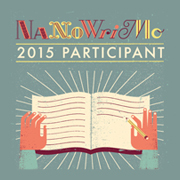
Celebrating National Novel Writing Month (NaNoWriMo) in November. A great time to start your own novel! Visit http://nanowrimo.org/
October 26, 2015
Take the NaNoWriMo Challenge in November
Blog List
Name *
Name
First Name
Last Name
Email Address *
Thank you for joining my blog list and for your interest in my writing!
- Ed Protzel

Well, here is where I don my writing coach cap and whistle and draw your attention to National Novel Writing Month (NaNoWriMo), being celebrated in November across the country.
If you’ve ever wanted to write fiction, you should definitely go for it next month. Just sign up at NaNoWriMo.org and draft a 50,000 word novel or novella. You track your progress, get pep talks and support, and meet fellow writers online and in person. What more could you ask for?
Sure, any writer can tell you that good novels are not just written; they’re re-written, edited, and edited some more. But still, this is a great starter exercise, if it only motivates you to get the story down. You can re-write/edit later. In fact, once you get your first draft roughed, then the fun really begins as you revise. So go for it!
A Less Solitary Experience
It’s nice that today there is so much support, online and otherwise, for would-be writers. The effort is not quite as solitary as it once was. Perhaps there are enough ways to link up to other writers and readers to overcome the isolation of the computer screen. I’ll tell you, readers who will take time to give you considered feedback are solid gold. Makes the long, hard slog of writing a novel more fun. A reader will have a different perspective from yours, and will tell you honestly when your story is unclear, etc., plus engage you in discussions that will summon up good ideas. Solid gold indeed.
The good thing about this one-month challenge is that it forces the writer to write every day. That’s great because, as I’ve mentioned, for a new writer, especially in the beginning, creating a novel can be more than challenging. It’s like your brain has inertia of rest: you’ve got to cut your way into the story with a sword or an ax. Once your story is going, however, it’s like inertia of motion: it’s painful to be kept away from your tale. At some point, the act of creating your story is so pleasurable, so exciting, so fulfilling, you don’t want to stop. It’s more than worth the pain of getting started.
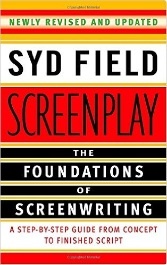
An “Easy” Method
Frankly, when I get an idea for a novel, I’m pretty ready to go—I can’t wait, in fact. Experience, perhaps; but the only way to get experience is to start writing. One fun way to go about crafting a novel is the method Syd Fields’ book, Screenplay, suggests for writing scripts. I’ve used it and recommend it.
Divide the story into four roughly equal segments. Come up with three major plot points: a quarter-way, half-way, and three-quarters-way in. Then decide on your dénouement or climax. These are guideposts and may change somewhat. In fact, the events at these guideposts may change meaning by the time you get to them because your story has outgrown them. It’s great if things change or evolve: that means you’re creativity is taking over!
Make sure you know what your major characters want; or if they’re confused, like Hamlet, why they’re confused. Then make their actions true to their motivation, which will keep the story moving forward. In this way, your characters can come alive, and your story will be more than a simple narrative. Often, your characters will fool you and change the story. To me, this is the magic of fiction writing—being surprised and delighted by your own creation!
Next week: More on creating characters, depth and themes, and how I developed the characters in my forthcoming novel, The Lies That Bind (TouchPoint Press, November 2015).
October 19, 2015
The Book Title: Doorway to the Story
Blog List
Name *
Name
First Name
Last Name
Email Address *
Thank you for subscribing to my blog and for your interest in my writing!
- Ed Protzel
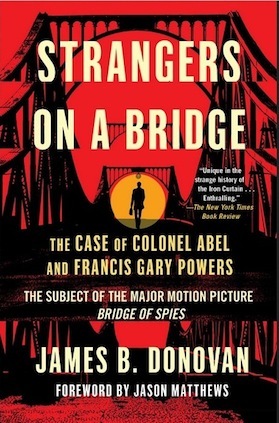
Saw the Steven Spielberg film “Bridge of Spies,” this weekend, which vividly reproduced the paranoia of the post-WWII/Cold War era. The Soviets were hardliners, no doubt;, but we had many of our own hard cases, too. Both the U. S. and the Soviets had a long slug to victory over the Nazis. And, naturally, hardliners in both camps were in the ascendancy after VE Day. That’s the way it works.
As a writer, reflecting on “Bridge” got me thinking of the importance of titles, both of movies and books. That, of course, led me to thinking about the title of my own forthcoming novel, The Lies That Bind (TouchPoint Press, November 2015): a dark, ironic, and twisted tale of intrigue in the antebellum South.
I’ve been asked by other writers how I came up with the title, and I can honestly say it was a major headache–until it appeared in a flash of light. The challenge was how to encapsulate the story’s many elements, overall mood, themes, and time and place. Do you try to elicit mood or do you get specific?
That’s a lot to pack into a few words, and still try to entice a reader to wonder about its meaning and to pick the book off the shelf.
I haven’t yet read Strangers on a Train (the book by James B. Donovan the movie was based on), but I’m guessing the “Bridge” in the movie title relates not only to the physical Glienicke Bridge between East and West Berlin, but to the connection bridged between the mutually hostile East and West that brought about the story’s humanitarian Powers/Able/student prisoner exchange. On a human level, “Bridge” also alludes to the respect that developed between Able, the Soviet spy, and Donovan, the lawyer reluctantly representing him, as men of principle, without painting either as evil or enemies in the Cold War.
A good title focuses on a book’s central theme.
Hanks (as Donovan) argued artfully and logically not to put Abel to death so that he might be used a future pawn if an American were captured. Donovan was an insurance wheeler-dealer, a regular guy, not a political hardliner, and diplomacy won out over vengeance and death. Hey, we’re still trying to learn that lesson today, right?
My book title, The Lies That Bind, focuses the reader on the story’s central themes, too. But unlike the phrase “the ties that bind,” which has a positive connotation, Lies shows the dark side of life in Southern slave society, with people held together through deceit, bound by falsehoods: injustice, subterfuge, and outright intimidation. See synopsis.
Yet, though the novel’s characters must live lies and live with lies, oppression can never be omnipotent. The opposite is true, in fact. This story shows that the only way we can fulfill our highest aspirations is to find the truth deep in our own hearts. It’s a battle we never stop fighting within ourselves.
In a macro sense, too, The Lies That Bind shows that a society built on falsehood and injustice is fated for an upheaval that will bring it crashing down. If you doubt that, just look at the former Soviet Union and its puppet, East Germany, which “Bridge of Spies” presents so well. And, historically, regarding The Lies That Bind, what was the result of the slavery system? I think my novel dramatizes it pretty clearly.
See you next week. Good reading!
October 12, 2015
“All the Way” Proves the Power of Art to Change Minds and Hearts

I was blown away by the LBJ play, “All the Way,” staged recently at the Repertory Theatre of St. Louis. Written by Pulitzer Prize-winning playwright Robert Schenkkan and directed by the Rep’s own Steven Woolf, the play depicts how President Lyndon Baines Johnson and Dr. Martin Luther King, Jr. were able to pass the Civil Rights and Voting Rights acts.
The play was all I’d expected and more. Brian Dykstra was amazing as the committed, cunning, calculating, yet vulnerable, LBJ. (No wonder Bryan Cranston won a Tony in the Broadway version.) And Avery Glymph embodied the reasoned, passionate and pragmatic Dr. King, and how he dealt with the various factions within the Civil Rights movement at the time.
What’s sad is that too many people today, young and not-so-young, don’t realize how long the odds were against passing the Civil Rights Act of 1964 and, later, the Voting Rights Act. Say what you will about the man—his Vietnam War blunder notwithstanding—no one but LBJ could have worked the magic he did to push through these two critical pieces of legislation.
Those who didn’t live through those times don’t realize how structurally racist the country was. In many states, African-Americans were outright blocked from voting. Those states also had laws stating that only registered voters could serve on juries, which were nearly all white and often resulted in unfair trials (e.g., Harper Lee’s To Kill a Mockingbird). And typically who held political office? Sometimes outright segregationists.
A Learning Experience
During the intermission, I observed a high school-age African-American girl sitting near me looking shocked at what she had seen and heard. And that was just Act One. The murder of the three Freedom Riders, a local African-American, James Earl Chaney from Meridian, Mississippi, and two Jewish New York college students, Andrew Goodman and Michael “Mickey” Schwerner, who went to Mississippi to register African-American voters, wasn’t even portrayed until Act Two.
After the final curtain, I noticed the girl again, this time appearing lost in thought, as if having gained a better understanding of Civil Rights history.
But we still have a ways to go, don’t we?
Turning to leave after the roaring standing ovation, a somewhat bewildered older (white) woman seated near me asked me, “Didn’t the Fourteenth Amendment already give blacks the right to vote?” I tried to explain about intelligence tests and other subterfuges that kept African-Americans from registering as voters in the South. This woman lived through the whole Civil Rights struggle and wasn’t even aware that African-Americans were blocked from voting! She said she was going home to research the whole matter.
Her determination to learn about the issue proves the power of theatre, and the arts in general, to affect people’s minds and hearts. I hope my novel, The Lies That Bind (TouchPoint Press, November 2015), a twisted tale of intrigue in the antebellum South, does that as well. Given the story’s time and place, naturally, race—as well as gender and class—are important elements in the novel.
In The Lies That Bind, a fugitive charlatan and a group of slaves stranded in the Mississippi wilds secretly agree to build their own egalitarian plantation. Right there, many of the old Southern myths and stereotypes about slaves come crashing down, as we hear these African-American partners say what they really think.
And that’s just the beginning, as Lies builds up steam. Soon afterward this unique alliance threatens to expose long-buried secrets that could bring down the powerful family that controls the town, the Frenches: a likely mad, reclusive matriarch and her crazed heir apparent.
Watch for the November release of The Lies That Bind !
Subscribe to Ed's Blog
Blog List
Name *
Name
First Name
Last Name
Your Email Address *
Thank you for your interest in my blog and my writing!
- Ed Protzel



